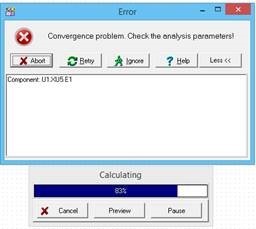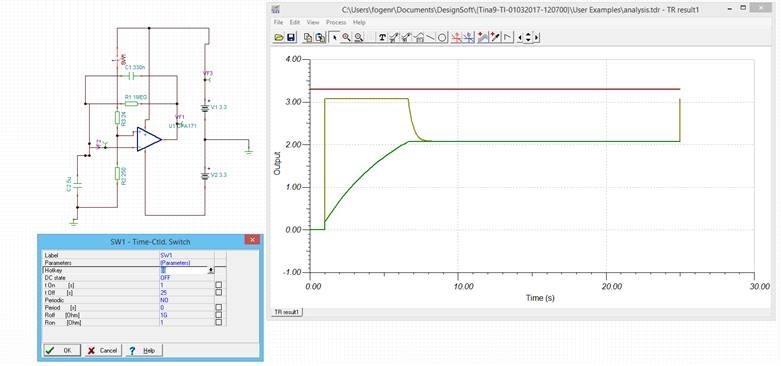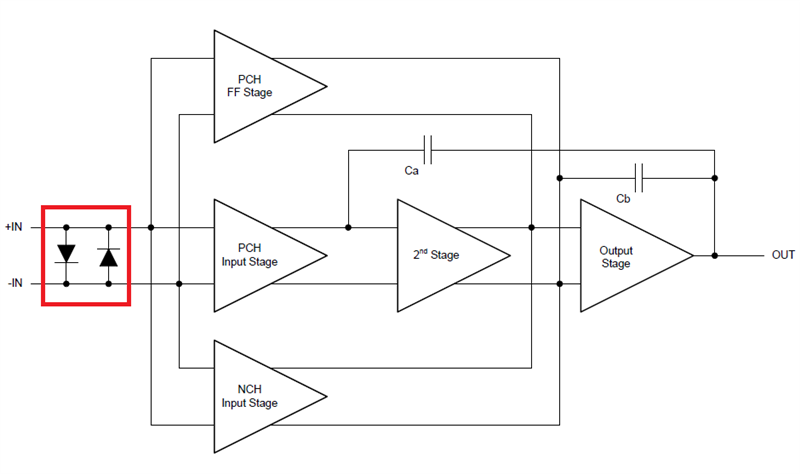Other Parts Discussed in Thread: TINA-TI, , LM318, OPA191, OPA192
Tool/software: TINA-TI or Spice Models
Hello,
I’m trying to simulate a timing behaviour with an OPA171 operational amplifier. It is referenced as a rail to rail output.
In the TINA simulation, the output only reaches 3.08Volt by a symmetrical power supply of +3.3 and -3.3 Volts.
What is the reason for this?
Furthermore, the simulation stops, when the switch is opening again, with an error at 83%
Thanks for your help.






